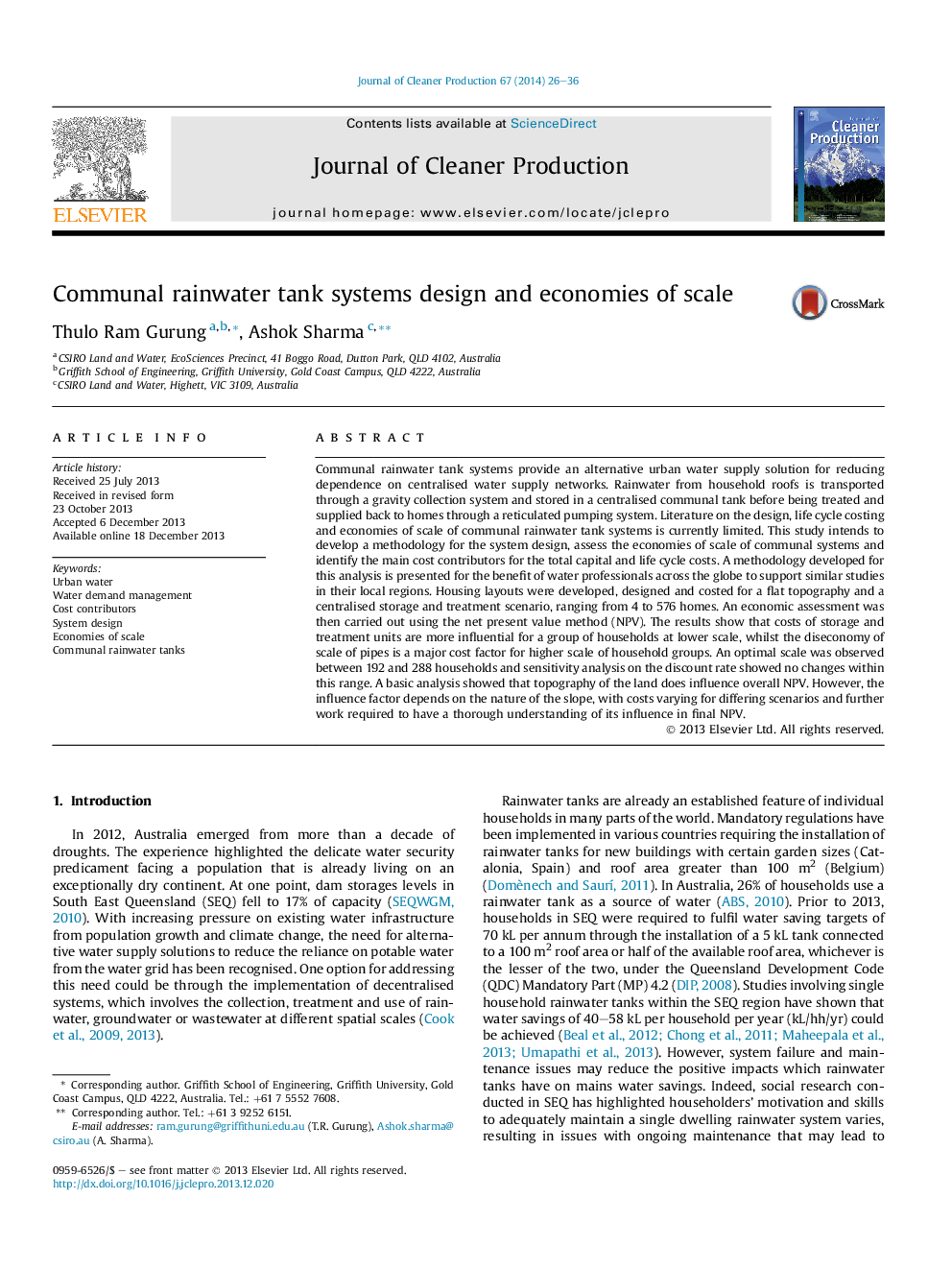| Article ID | Journal | Published Year | Pages | File Type |
|---|---|---|---|---|
| 1744937 | Journal of Cleaner Production | 2014 | 11 Pages |
•A generalised method for designing and estimating the economies of scale of a communal rainwater system has been developed.•Life cycle cost assessment approach has been applied for estimating economies of scale.•The influences of various cost components have been demonstrated on the optimal scale of communal rainwater systems.•Capital cost of components dominates the life cycle cost of the system.•Cost of pipes affects the optimal number of households in a communal rainwater system.
Communal rainwater tank systems provide an alternative urban water supply solution for reducing dependence on centralised water supply networks. Rainwater from household roofs is transported through a gravity collection system and stored in a centralised communal tank before being treated and supplied back to homes through a reticulated pumping system. Literature on the design, life cycle costing and economies of scale of communal rainwater tank systems is currently limited. This study intends to develop a methodology for the system design, assess the economies of scale of communal systems and identify the main cost contributors for the total capital and life cycle costs. A methodology developed for this analysis is presented for the benefit of water professionals across the globe to support similar studies in their local regions. Housing layouts were developed, designed and costed for a flat topography and a centralised storage and treatment scenario, ranging from 4 to 576 homes. An economic assessment was then carried out using the net present value method (NPV). The results show that costs of storage and treatment units are more influential for a group of households at lower scale, whilst the diseconomy of scale of pipes is a major cost factor for higher scale of household groups. An optimal scale was observed between 192 and 288 households and sensitivity analysis on the discount rate showed no changes within this range. A basic analysis showed that topography of the land does influence overall NPV. However, the influence factor depends on the nature of the slope, with costs varying for differing scenarios and further work required to have a thorough understanding of its influence in final NPV.
